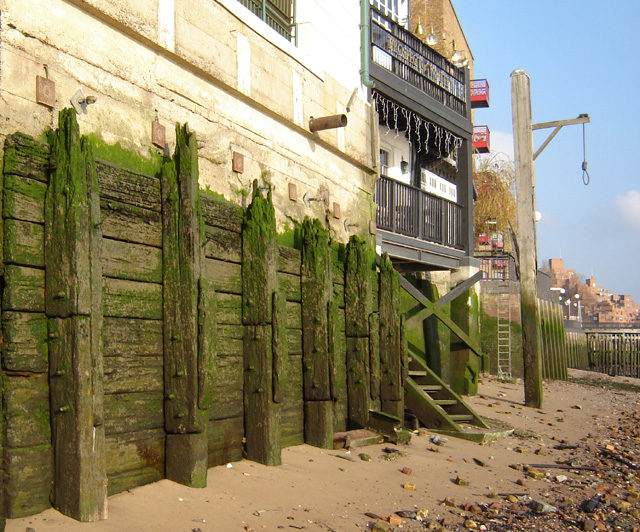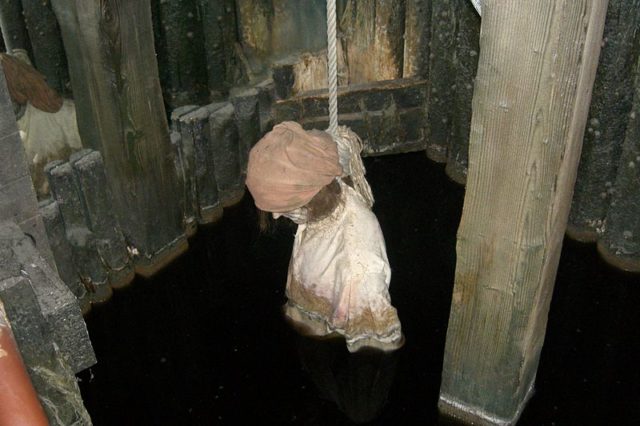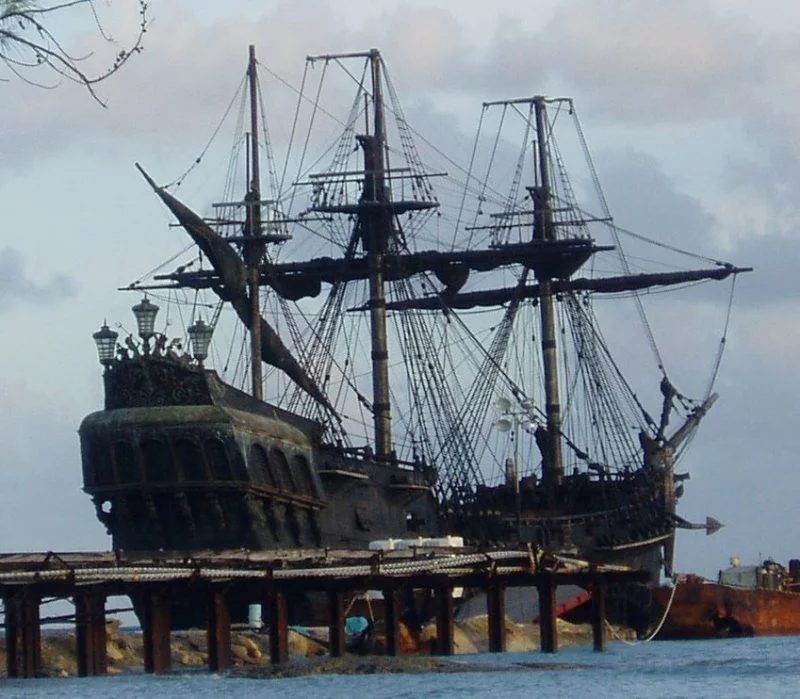Even though the Execution Dock in London is long gone, the gallows are still maintained to this very day on the Thames foreshore by the Prospect of Whitby public house.
The Execution dock was used for 400 years up until 1830. It was used to execute all seagoing criminals, including pirates, mutineers, and smugglers. The dock was nothing more than scaffolding used for hangings and was located beside the shoreline of the River Thames at Wapping.
The British Admiralty oversaw all crimes committed on the water, and also doled out the sentences to the criminals. The dock was used as a symbol for their jurisdiction; it was placed just beyond the low-tide mark in the river.
You could not outrun the long arm of the law, they did not care if you committed the crimes in their waters or abroad; you would be brought back to London and tried by the High Court of the Admiralty.
They doled out Capital Punishment to acts of mutiny that resulted in death, for murder on the sea and very specific violations of the Articles of War that governed the behavior of naval sailors, this included sodomy.
Those who were sentenced to death were usually brought to the Execution Dock from one of two places, Marshalsea Prison or Newgate Prison.
Those that were condemned by the Admiralty were paraded through the streets of London by the High Court Marshal or his deputy. He would carry a Silver oar, which was a representation of the Admiralty’s authority. Prisoners were transported using a cart which had a chaplain inside so they could confess their sins to him. The prisoners were allowed to drink one quart of ale from a public house of their way to the gallows, just like the execution process to Tyburn.
The execution was a family affair back then; families would come out and stand on the river banks or one of the boats that would come up the river. The executions were performed by hangmen who worked at both Newgate Prison and Tyburn.

For those who were convicted of piracy, they would receive the cruelest of punishments. They would be hanged with a shortened rope so that when the floor was dropped out from under them their fall would not snap their neck, they would then strangle to death.
This was called the “Marshal’s Dance” because it looked like they were dancing while they struggled. Unlike hanging on land, bodies of pirates were often left up until at least three tides had washed over their head.
If the crime was so heinous, then the Admiralty would have the bodies covered in tar and hung in chains at Blackwell Point or at Cuckold’s Point as a warning to all of those who would dare turn to piracy.
Next, I will share an account from The Gentleman’s Magazine, from February 4, 1796, that gives a very vivid image of an execution at London’s Execution Docks.
“This morning, a little after ten o’clock, Colley, Cole, and Blanche, the three sailors convicted of the murder of Captain Little, were brought out of Newgate, and conveyed in solemn procession to Execution Dock, there to receive the punishment awarded by law. On the cart on which they rode was an elevated stage; on this were seated Colley, the principal instigator in the murder, in the middle, and his two wretched instruments, the Spaniard Blanche, and the Mulatto Cole, on each side of him; and behind, on another seat, two executioners.
Colley seemed to be in a state resembling that of a man stupidly intoxicated, and scarcely awake, and the two discovered little sensibility on this occasion, nor to the last moment of their existence, did they, as we hear, make any confession. They were turned off about a quarter before twelve in the midst of an immense crowd of spectators.
On the way to the place of execution, they were preceded by the Marshall of the Admiralty in his carriage, the Deputy Marshall, bearing the silver oar, and the two City Marshals on horseback, Sheriff’s officers, etc. The whole cavalcade was conducted with great solemnity.”

Captain Kidd, who was a heinous pirate convicted of piracy (obviously) and murder, he was taken from Newgate Prison and hanged at the dock in 1701. The rope snapped during his first execution, so they strung him up again and killed him the second time, his body remained in that location for forty years.
The last executions to take place at the Execution dock were in 1830, where sailors George Davis and William Watts – who had murdered a ship captain – were hanged in December.
There have been reports of a large E on the Thames side of the building at Swan Warf; supposedly that indicates where the dock once stood. Other sources state that the dock was once where the London Underground Station now stands, which is about 2/3 of the way along Wapping High Street going east.
